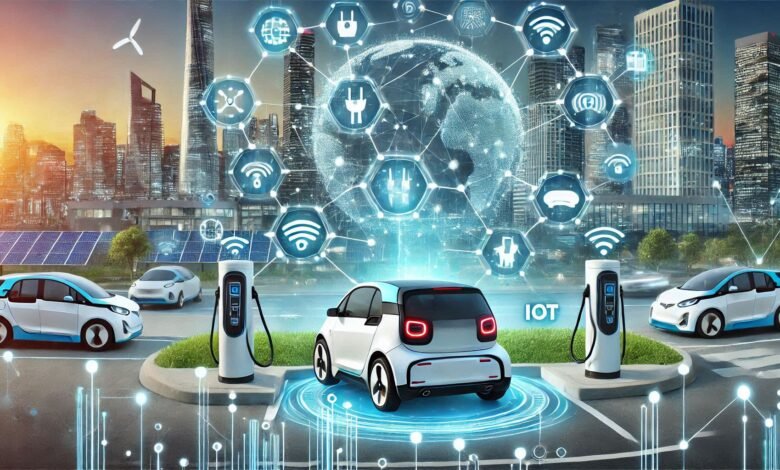
The world is rapidly recognizing that we need environmentally friendly ways to get around to stop climate change and clean up the environment. Electric vehicles, or EVs, are becoming a good option for cars that run on gasoline or diesel. But there are still problems with EVs becoming widely used, such as a lack of charging stations and range worry.
In this situation, the Internet of Things (IoT) can help get around these problems and speed up the use of electric cars. We can improve the charging experience, make better use of resources, and speed up the move to a cleaner and greener transportation system by using IoT technologies.
“By leveraging IoT technologies, we can enhance the charging experience, optimize resource allocation, and promote the transition to a cleaner and greener transportation system.”
Electric Vehicle Challenges
One of the main things that EV owners worry about is how easy it is to get to charging stations. IoT is a very important part of solving this problem. With systems that are connected to the internet of things (IoT), we can make a large network of charging stations that are all linked together and controlled in a smart way.
For example, smart parking solutions can help charging stations be used more efficiently and make charging easy in public places like hospitals, streets, and so on, as well as in private places and buildings like shops, office buildings, and neighborhood areas.
EV owners can get real-time information on charging station availability, charging speed, and car status through mobile apps. This makes better use of resources and cuts down on the time needed to find charging spots.
How IoT Can Help
The electric car isn’t just about getting around; it’s also about organizing business processes so that we can learn what works and what doesn’t and become more competitive. That’s why IoT can also change the way things are charged, making it easier and faster. EVs can talk to charging stations and start charging sessions instantly when they are plugged in with IoT solutions.
EVs and the power grid can also talk to each other back and forth when smart grid integration is used. This creates chances for vehicle-to-grid (V2G) technology, in which EVs can use electricity and then send extra electricity back to the grid during times of high demand. EVs can become mobile energy storage units by using IoT and V2G. This helps keep the grid stable and allows for the use of green energy.
Because electric cars are more connected than ever, IoT technology makes it possible for vehicles and road equipment to talk to each other. This lets drivers of cars and people in charge of infrastructure send and receive messages, which reduces range anxiety and makes things safer.
Range anxiety, or the fear of running out of battery power on a trip, is a big worry for people who want to buy an EV. The Internet of Things (IoT) can help with this problem by showing users in real time which charging stations are nearby on a planned path. By connecting IoT data to navigation systems, EV drivers can easily find charging sites, see if they are available, and plan their trips around them.
IoT can also make predictive analytics possible, which can estimate battery range based on weather, traffic, and drive conditions. This knowledge gives EV owners accurate range predictions, which makes them feel better about their cars and boosts their confidence in them.
Collaboration for EV Transition
To make the switch to electric vehicles work, many groups must work together. These groups include governments, private companies, and people. IoT can make it easier for people to work together by connecting everything. IoT platforms can make it possible for businesses that make electric vehicles, companies that provide charging infrastructure, and energy companies to share data and insights.
This working together could lead to new ideas like integrating smart grids, creating flexible pricing models, and making charging systems work better. These groups can work together to make an electric transport ecosystem that works well and lasts by using IoT.
IoT: A Powerful Tool For EV
Getting people to buy electric vehicles is important if we want to protect the earth and build a better future. There are problems, like not enough charging stations and worries about running out of power, but the Internet of Things is a powerful way to get around these problems.
By adding IoT technologies to the ecosystem of electric vehicles, we can improve charging facilities, make charging more efficient, and give users real-time information to help them feel less anxious about their range. Taking on this task is important to speed up the move to a cleaner and greener transportation system that will help the environment and future generations.











